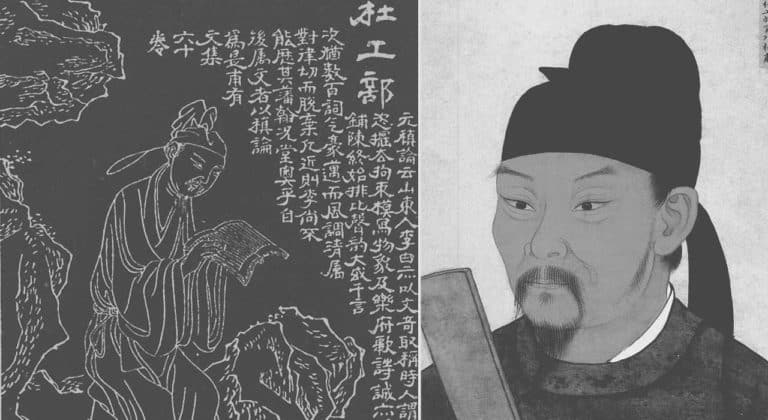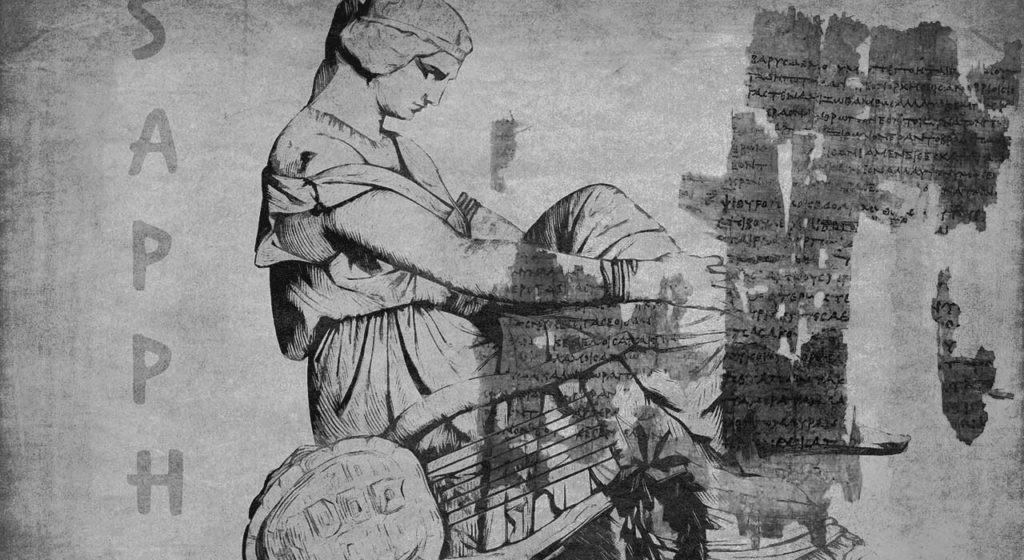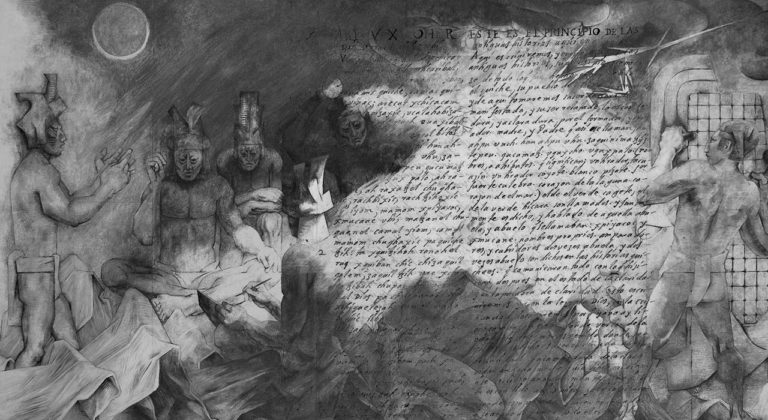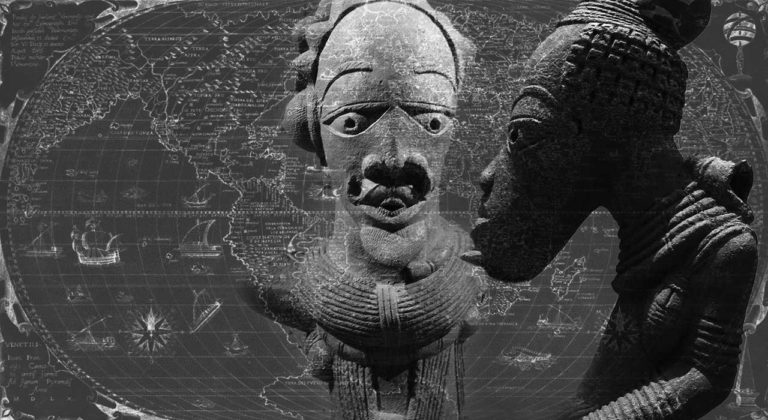Making Connections Assignment
Overview
This semester, we are reading a number of great works together and discussing some of the themes and ideas that resonate with us today. However, other great works throughout history also deal with recurring human concerns. This assignment allows students to explore great works from different cultures throughout history and discuss their relevance and impact. Each student will prepare three presentations, one per unit, to share with their classmates as part of class.
Table of Contents
This page is intended to provide you with materials to help you complete your assignment successfully.
Please consult the course materials your professor has provided you for specifics on your assignment.
Click on box to go to section
section 1
Familiarizing Yourself with the Assignment
Please begin this project by reading the instructions for the assignment at least a couple of times. Review the Overview, Prep, and Assignment sections carefully, and make a note to ask your professor questions if you are unsure about what the assignment is asking you to do
Once you have reviewed the instructions, please take a look at the sample slides and template that have been provided to you. Listen to the presentation and take note of the format, the layout, and the information that goes on each slide. After you have completed these steps, it is crucial that you put together a plan along with the timeline to complete your assignment. This is not the type of assignment that can be completed the night before it is due. This means is that you need to plan and come up with a schedule for completing the following steps and the assignment successfully:
- Pick a topic. Ideally, you should decide on a topic during the week that your instructor has introduced the class to this assignment. You want to do the topic selection early, so that you have enough time to complete the remaining steps outlined below. In addition, if you wait to choose your topic, it could very well be “claimed” by one of your classmates.
- Set a day and time well in advance of the assignment deadline to meet with a librarian to begin researching your topic. Make an appointment with the librarian—this way you will feel more compelled to show up.
- Plan to put your slides together at least two days before the assignment is due.
- Set aside enough time to practice giving your presentation a few times before recording your voice on the slides.
Finally, you should review the grading rubric, so that you can familiarize yourself with what your professor is looking for when grading your presentation. Please make a note of the categories in the grading rubric and how each category is weighted. Again, you are strongly encouraged to reach out to your professor if you have questions. Remember, reaching out to your professor early in the process for clarification will save you a lot of time and effort down the line.
section 2
Topic Selection
As you get ready to choose a topic, begin by reviewing the interactive timeline and map. The timeline should give you some basic information about each item: the time period, place, and the creator (if available). Most of the time, you may find an item that already aligns with your interests. For example, you may be interested in the visual arts, in which case you may choose to explore a painting; or you have an interest in mythology, in which case you decide to present on an epic.
Pick three items from separate time periods that appear interesting and conduct some additional research about each item on the internet. Please note that this is just a preliminary step, and that you should not be looking for sources yet. You are simply trying to gather information about the three objects that piqued your interest. You may even read Wikipedia entries about the three items to get a general sense of the historical background and the cultural context behind your three choices. However, please note that once you have made your selection you need to use credible academic sources as the basis for presenting information about your selection. Here are some questions you can ask as you work on selecting your topic:
- Why would this item be included in the interactive timeline and list?
- Why would this item be significant to us?
- What excites you about this topic?
Once you have a better sense of each item, pick the one that checks some or all of the above boxes, keeping your other two choices as backups in case someone else has already claimed your first choice.
But what if none of the items on the list grab your attention? Since this could be a definite possibility, here’s what is recommended: take the plunge and pick something you know absolutely nothing about. Most of the time, if you plan carefully, picking a topic that you know nothing about can turn out to be an exciting and enriching experience. These items have been vetted and carry substantial cultural significance, so you will find plenty of information about any of these topics. If you are still at a loss, please reach out to your professor for guidance.
Finally, please review and follow your professor’s instructions when submitting your choice of topic. Failing to not follow directions could result in you not getting your first choice.
section 3
Researching Your Topic
Once you have your topic and are ready to start researching, do some preliminary searches online about your topic. Take notes on basic factual information about it (the who, what, where, when). Don’t go too far here, this is just so you start recognizing key names, places, and terms, and have a sense of the basics.
Have the instructions handy, in particular what is required to fill in each “slide,” so you know what information you need to discover about your work. Then, set aside some time to touch base with a librarian (you can do this from home!)
With the librarian, start identifying some resources that will help you with the assignment. Read through all of the research tips below, and have them in mind as you work with the librarian.
As you’re researching, do think creatively. It’s important to search more than just the name of the work itself. Be sure you’re getting a sense of the person or people behind it, and the era of the work, and the like. So if you’re researching a Medieval Castle, for example, you would want to see what you can find about: (1) who have built it or commissioned it and why, (2) who lived there, and around there, and what do we know about them, (3) what we mean when we say something is from “medieval” times, (4) what other buildings were typical or common in those times, (5) what characteristics were important in this castle’s design, (6) is this building still important to its region today and why/why not, (7) anything else that helps you get excited about the work and/or answer a question.
As you’re researching don’t feel like you have to read everything! You’re at the gathering stage. Is the article or chapter likely to help you? Mark it for later to return to it. It’ll be okay to read carefully the sections you need, and okay to not worry about the rest.
Remember: Becoming a scholar and learning how to research topics is not “easy.” If it were, then there would be no point to teaching or practicing it. Even researchers with years of experience will consult with a librarian when they start a new project. With effort, the reward is seen in stages from the short term to the long term. In HUMA 1301, you are learning a set of skills, above and beyond learning about works of art. Be confident in yourself, ask for help when you get stuck, and have fun!
section 4
Prewriting (Outlining, Brainstorming, Freewriting)
The next stage in the process is prewriting. A presentation or piece of writing does not often unfold perfectly the first time we sit down to write or type. The “finished product” of research projects is often the result of one or more iterative pre-writing processes, including note-taking, brainstorming, freewriting, and outlining. Sometimes, research can become overwhelming, as students ask themselves: What is most important to take away from each text? How should I present this material to the class? Why is this topic important to me or other people? Using one or more of the following pre-writing strategies can help you figure out the content and structure of your presentation.
notetaking
As you are conducting your research, make sure to take notes. When you find a good piece of information from a source, write down any important information on a notebook or in a Word document. For example, if you find a great quote from a scholarly source, make sure to write down the exact wording, the name of the author, and the page number where you found that information. Even if you use your own words to explain that quote, MLA format asks you to cite this information. Get in the habit of writing down key ideas and phrases and keeping track of where you found that information.
Brainstorming and Freewriting
Sometimes, we can feel paralyzed before communicating our research or worry that we have nothing meaningful to say. In these cases, jotting down any ideas that come to mind can be helpful in realizing you actually know more than you thought you did. Some students enjoy brainstorming, which means writing down any ideas that you think might be relevant. You might also enjoy freewriting, where you start writing out all of your thoughts without worrying about the structure until you run out of things to say.
In this assignment, you are asked to discuss the piece of work itself, the cultural context within which it was made, and the contemporary significance of that work. You might want to consider the following questions when brainstorming or free writing:
Description
- If your work is a piece of writing, what is its basic storyline or contents?
- If your work is another kind of object or building, what are its physical attributes?
- Of what materials is your object composed? What does it look like?
Cultural Context
- During what time period was this work created? From which culture does this work originate? What else do you know about that culture or time period in general?
- How does this work represent the culture and time period from which it originates?
- What was the purpose of this work at the time? Who would have had access to this work? Who enjoyed this work at the time? Was there controversy surrounding it? How did people find meaning from this work when it was made?
Contemporary Significance
- What values did you notice in your analysis of this work that shed light on the contemporary human experience?
- What human needs do you think that this work might address?
- Does your work present an ethical standpoint? If so, what ethics does it promote?
- How has learning about this work expanded your perspective regarding contemporary world cultures? Why might your work be significant in terms of the “big picture” of human cultures today? Does it remind you of any contemporary works in popular culture that are familiar to you?
- Does your work represent any issues that humans still face in the world today? If so, what issues? Where in the world do you think these issues are still present?
Outlining
Some students find it helpful to organize their thoughts in outline format using numbers, letters, or bullet points to compose a skeletal structure for their presentation. You may wish to use the suggestions in the Making Connections template and construct a longer outline that you will use as a reference point when discussing your work.
Some general principles
- The slide is meant to be a visual tool that augments and supplements your presentation. You should be telling us far more about your topic in your own words.
- Be economical and concise in your choice of words. Do not type out the entirety of your thoughts onto the slide itself. Rather, use the words on the slide as a way to signal to your audience crucial information that is analyzed and interpreted through your audio presentation.
- Make sure to choose a visual component for your slide. This can be an image of the painting if that is your chosen object, or a book cover, or an artistic rendering of the content of your object (for example, one might use one of William Blake’s paintings of the Divine Comedy for the visual component).
- Please see the template provided for a model for how to complete the assignment. The template is not meant to dictate exactly how you organize your slide, but rather a successful example for how to go about creating a presentation.
Build the Slides
Open the Making Connections Powerpoint Template, and prepare five total slides to accompany your oral presentation of approximately 4-6 minutes total. Throughout your presentation, your narration should include additional information about the work in your own words, not just the data on your slides. The slides are a jumping off point for your analysis and insights.
Slide 1
will include the name of your work, your name, and the name of your instructor.
Slide 2
should focus on presenting the basic factual info and description of the work itself. Find an image that represents your work (as well as a source image credit). Include the required basic factual information required by the template.
slide 3
should focus on considering the work’s cultural context. To whom was this important or significant when it was created? Another way to think about this is to consider what its purpose was at the time, who would have known about it, enjoyed it (or not), what meaning it would have had individually or culturally, or similar lines of inquiry.
Slide 4
should focus on contemporary significance. What have you found about what people today think about the work? In what contexts is it still of interest? What does this work tell us about who “we” are as human beings, and/or what does it allow us to understand about a time period distant from our own? What does this work tell us about where “we” have come from? What are some contemporary human needs, values, cultures, and/or global ethics that came to mind as you learned about this work?
Slide 5
should feature your Works Cited page in MLA format.
section 7
Reviewing, Responding, and Discussing
Now that you have finished your presentation, you get to watch the presentations your fellow classmates put together, and instead of reading great works and discussing them, you will be watching and listening to these presentations to discuss them. Make sure you know what your professor’s expectations are for how you will discuss these. They may have specific requirements for you to comment on the discussion boards where you have posted your presentations.
Students in past Great Questions seminars report that getting to learn about these great works of human civilization is one of the most enjoyable parts of the class, not only because they learn about so many different pieces of human culture, but also because they get to hear other students share their own work and their ideas. Because each presentation is relatively short, you can watch a few at a time — just make sure you do make the time to view all of them. As you watch, you should consider taking notes, jotting down ideas of what you are seeing, what questions you have, and what interests you — whether that is so you can remember to talk about them if you have a class with a live meeting or better compose your thoughts on discussion boards.







